All about the musical instrument glucophone
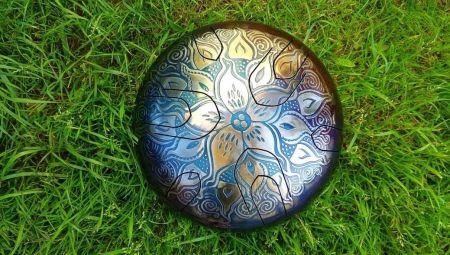
Today the musical instrument glucophone has become very popular. Its sounds fascinate and soothe, allow you to immerse yourself in your thoughts. It is often used by street musicians who play meditative compositions. But most people don't even know what it is and how to play it.
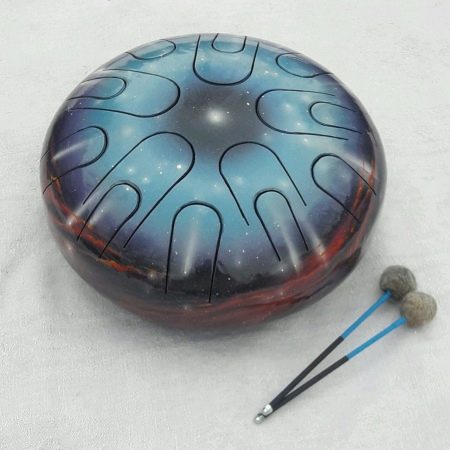
Meanwhile, this petal drum can be a great purchase for your home. If you like everything unusual, you like to create a special atmosphere in the house for yourself and your guests, then you will like this curiosity. Find out more about the features of this tool in our article.

Peculiarities
The glucophone is a musical instrument consisting of two bowls. One has petals (or tongues), and the other has a resonating hole. It is adjusted so that the notes sound clear and rich. Armed with a grinder, a jigsaw and a cylinder, you can create such a wonderful tool yourself. With it, anyone can develop hearing and a sense of rhythm on their own. You just need to play for your own pleasure, without thinking about the rules.
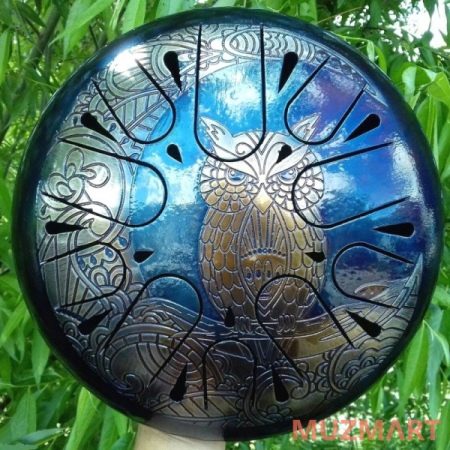
The glucophone is considered to be petal drums, but this can only be done conditionally. After all, no tension or compression is required here to extract sounds, therefore it can be attributed to the class of drums with a stretch. It would be more correct to call it an idiophone, which literally translates as "own sound", since the sound source is the body of the instrument. The instruments of the idiophone class are among the most ancient and are present in many national cultures.
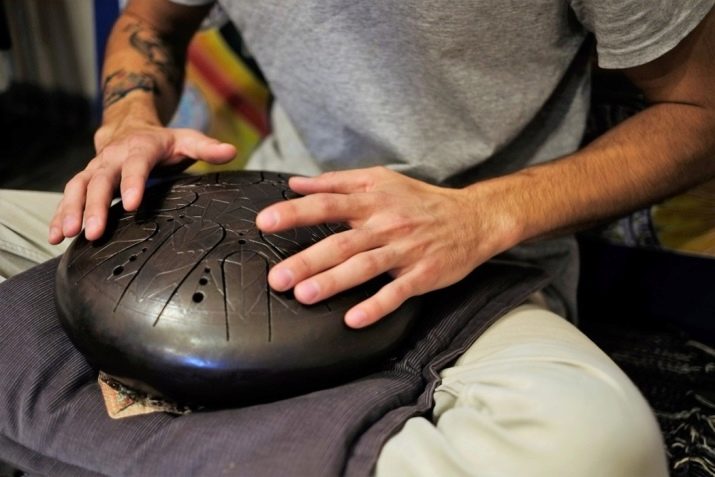
A bit of history
It may seem that the glucophone is an ethnic instrument that has been used by some ancient tribes since time immemorial. In fact, Indian bowls, gongs, drums and other ancient instruments are not directly related to him. It is believed that the prototype of the glucophone was the homemade tambrio instrument, invented by the musician from the Dominican Republic Felle Vega. To create it, he used a freon cylinder. With his help, he tried to create a kind of singing bowls from Tibet, which perfectly accumulate sound.

The inventor carved resonator petals on it, like the ancient slot drums played in Africa and Asia. Only those were wooden, and the tambrios were made of metal. He managed to realize his idea - the resulting instrument sounded cleaner than ethnic drums, and looked more accurate.
Why did he decide to take a balloon as a basis? Probably because on the neighboring island of Trinidad, it was quite common to make musical instruments from steel containers, oil drums and other containers. Such iron drums were made there at the beginning of the 20th century.

Then, in 2007, this metal instrument was refined by the American Dennis Havlena, the inventor of new musical instruments. As a basis, he took a larger propane cylinder. Dennis tried to modernize the metal petals so that they sounded clearly on the notes, and he succeeded. The authorship of the creation of the glucophone is attributed to him. One of the bowls of the resulting instrument had petals of different sizes extending from it, and the other had a hole for sounds to come out. The glucophone has other names as well. For example, some people prefer to call it happy-drum or tank-drum in English.
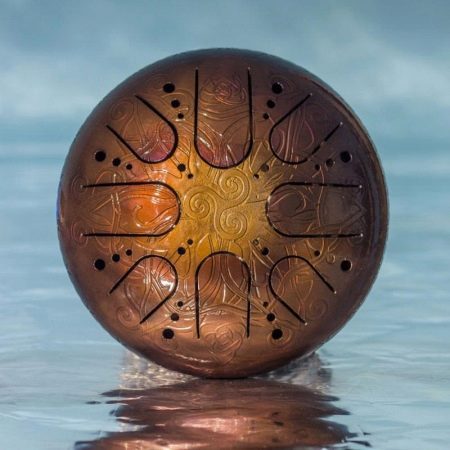
Differences from other tools
The metal drum became the progenitor not only of the glucophone, but also of another instrument - the hang. Its structure and appearance differ little from that of a glucophone, but there is a difference between them.
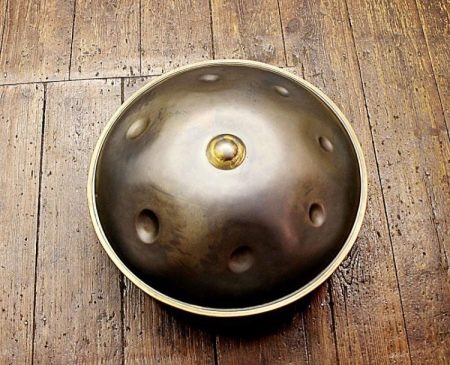
For example, outwardly, the hang looks more graceful, it looks like an inverted cymbal, while the glucophone consists of two cymbals. Also, the hang has no noticeable cuts on the body, and it looks more monolithic. At the same time, it sounds louder. The metal in the sound makes the hang sharper in contrast to the meditative enveloping glucophone. This tool is more expensive.
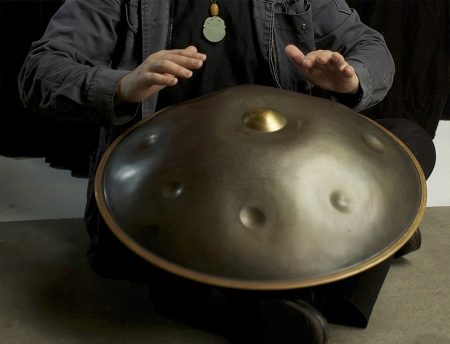
Fimbo is essentially the same glucophone. It's just that the manufacturer of this tool assured that the products of his company are much better than the other, so they assigned a separate name to it. It is difficult to judge how true his statement is; you can compare the recordings of the sound of these two instruments by watching videos on the Internet.
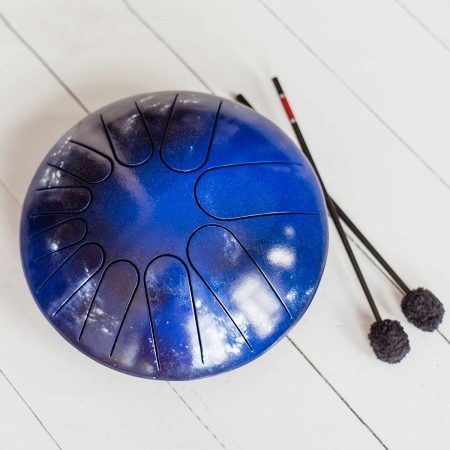
Sound
The glucophone has different sound options, from which you can choose the one that suits your mood - light, positive, cheerful, melancholic, dreamy, mystical, neutral. It can be complemented by ethnic motives: Indian, Russian, Arab and any others.

Everyone can find their favorite mood in the sound of the glucophone and learn to play their own music on it. Another plus of this instrument is that no special education is required to play it.
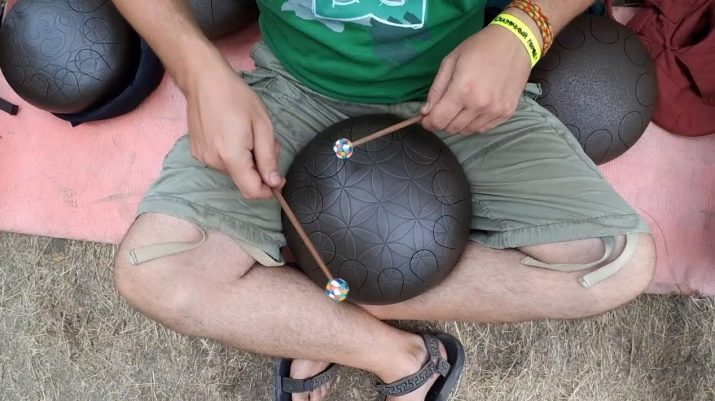
This tool really looks a bit magical. After all, it is enough to touch its tongues with your hands or sticks, as pleasant music literally pours out of it. This is due to the fact that the tongues resonate during impacts and vibrate around them. Each petal of the glucophone is tuned to its own note, and you can combine them according to your taste or momentary wishes.

Let's add that the sound of this instrument is influenced by its size. So, small specimens measuring 22 cm have a higher and more sonorous "voice", and large ones give out a more booming surround sound and thick bass.
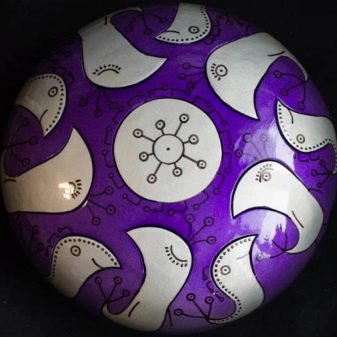
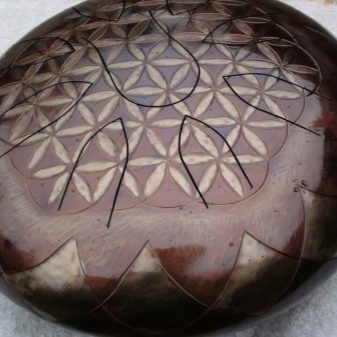
How to choose?
There are several things to consider when choosing a glucophone. First, pay attention to its weight.If you plan to carry it down the street, take it on a visit or travel, then this parameter will play an important role. So, popular models with a diameter of 22 cm weigh only about one and a half kilograms, 30-centimeter glucophones weigh about 4 kg, and 35 cm glucophones weigh 6 kg. Perhaps the largest diameter would be appropriate to purchase for home meditations.

The design of this musical instrument may vary. Engraving allows you to make it a unique piece of art. If a tool is made to order for you, then it may contain nominal symbols.
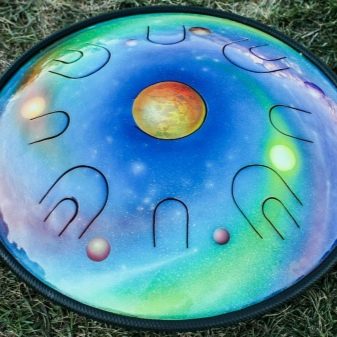
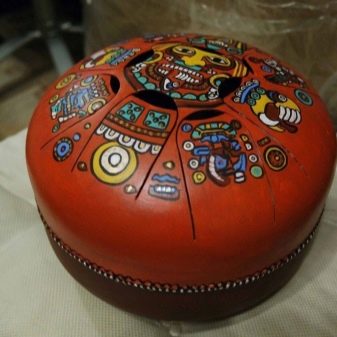
On the Internet, you can find not only glucophones, but also handy bags for them. With such a case, you can easily carry it along the street or simply store it at home without fear that traces of mechanical damage will appear on its surface.
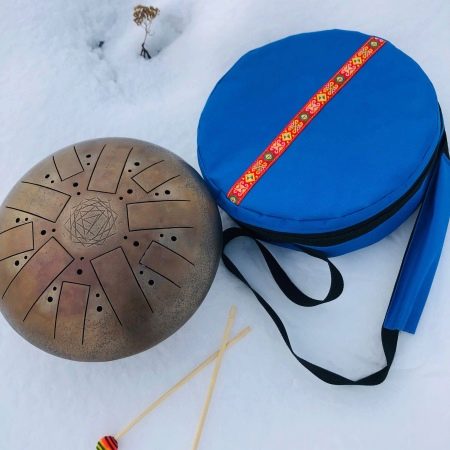
How to do it yourself?
You can make a glucophone yourself. The main thing is to get empty gas cylinders, and then you can create a musical instrument with your own hands that fascinates with minor, integral or major frets.

To create a glucophone with your own hands, you will need:
-
hacksaw for metal;
-
Bulgarian;
-
funnel;
-
bucket;
-
empty bottle;
-
protective welding mask.
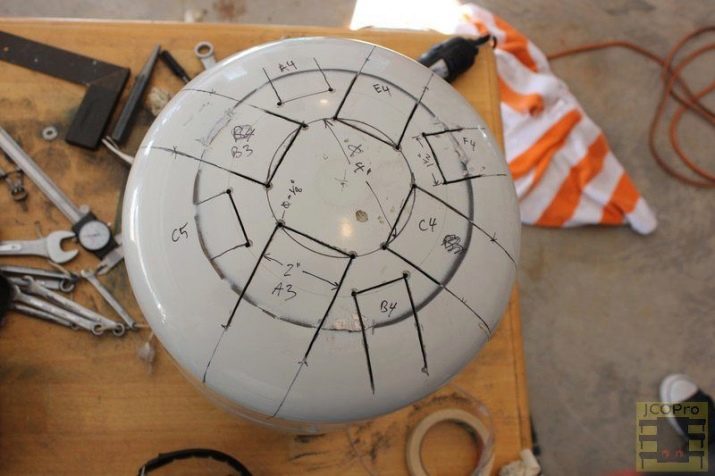
Cylinders require careful handling. Even if it has been left empty and open for several years, it can be dangerous to humans.
-
Open the valve and make sure there is no more gas inside. This should not be done indoors.
-
If there is no characteristic escaping odor, lather the valve opening. This will help you understand that there are no gas residues in the container.
-
Lay the can on its side and saw off the brass valve. Fill the bottle with water, then empty it.
-
Step back a couple of centimeters from the top and bottom seams, mark and saw off. Saw as straight as possible so that later there will be no difficulties when welding.
-
After welding 2 parts, it is necessary to clean the seams and remove the paint - first with a grinding disc, and then walk with a petal.
-
Make a line on one side. Determine the center and draw a line from it, then a second at an angle of 72 degrees, and so on. Then draw the petals themselves so that they are at a distance from each other. Alternate between large and small, as in the drawing.
-
Saw out the petals, but do not do it all the way - along the outer edge, they should adjoin the plate.
-
Download the tuner to your phone. Check each note: if it is higher than the desired one, deepen the cut until you get the desired one.
-
Paint the finished glucophone in the color you like. First, the surface must be treated with a degreaser, then it is advisable to gently wipe with a sticky cloth to remove all dust particles. Apply auto primer in 2 layers at intervals of 20 minutes, then paint also in 2 layers and varnish.
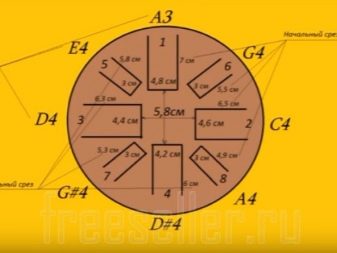
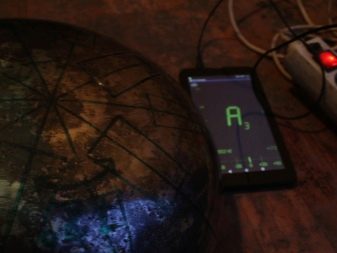
How to play?
Playing this musical instrument is easy and fun. Let's take a closer look at the features of working with this unusual tool.

Customization
The glucophone is adjusted by the master during the manufacture. This process consists in sawing the petals: the note extracted from this petal depends on the depth of the cut. And to tune it correctly, a tuner is used. Today it is not necessary to purchase it in a store, it is enough to download a mobile application to your phone.
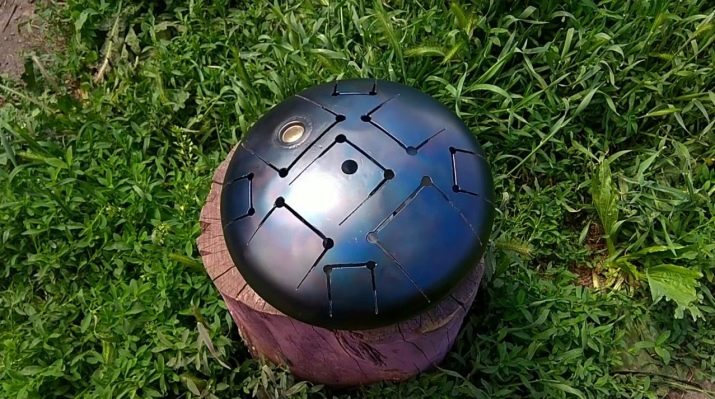
Glucophone settings can be roughly divided into two main types. There are major schemes, that is, funny ones. Playing an instrument tuned according to this principle invigorates and gives strength. These settings include Pygmy and F-sharp modes. And there are also minor ones, or, in other words, sad ones, if you buy a glucophone primarily for relaxation and meditation. This corresponds to modes such as Insomnia and B minor.
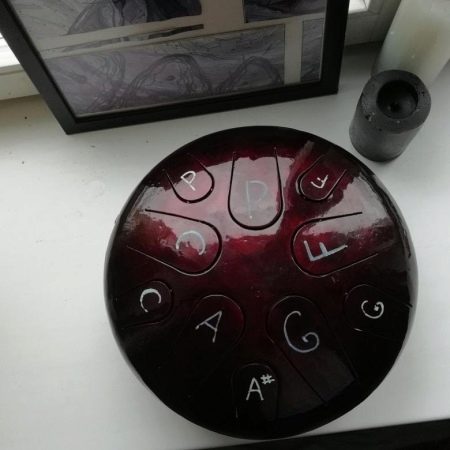
For fans of everything mysterious, the mystical settings Astral, Akebono and Mystic may be interesting. Exotic notes are heard in the eastern modes of Hijaz and Shiraz.
If you cannot decide which settings are closer to you, or are purchasing a glucophone for a child, then neutral ones are suitable: C major, D minor pentatonic, A minor, Along, Golden Gate, Silent.
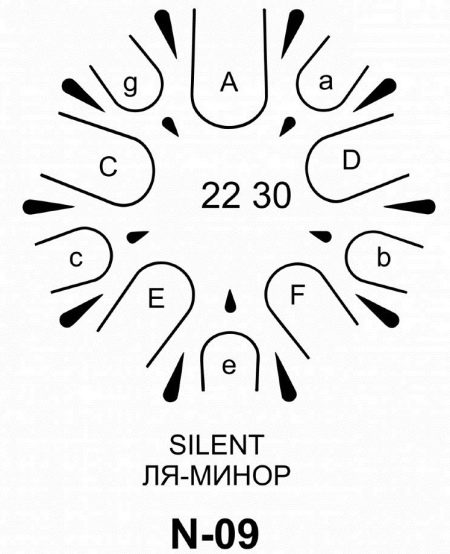
The game
Classes and lessons on the glucophone are not conducted, there is no special instruction on how to play it, harmony is present in it from the very beginning. It is difficult to fake it on it, it is so "right" it is arranged. Choose combinations of notes at the behest of your soul. The main thing is not to try to play the whole disc at once when learning. Choose 2-3 tongues for a start and play them, and then gradually turn to others, making your game more difficult. So gradually you will develop your ear for music and learn how to play the melodies you have conceived. The bounce of the petal should be bouncing, so for the best game on the glucophone, it is worth developing the joints of the fingers.
- Technique 1. The author of the idea of the glucophone plays with the inside of his fingers. This is a simple technique that results in sounds that are not too loud. However, this technique allows even children to pick up the tone of the sound. Using all or nearly all of the fingers will develop a sense of rhythm and motor skills. At first, this can lead to calluses on the fingers, but when the skin in these places is thickened, then you will again receive only pleasant emotions from the game.
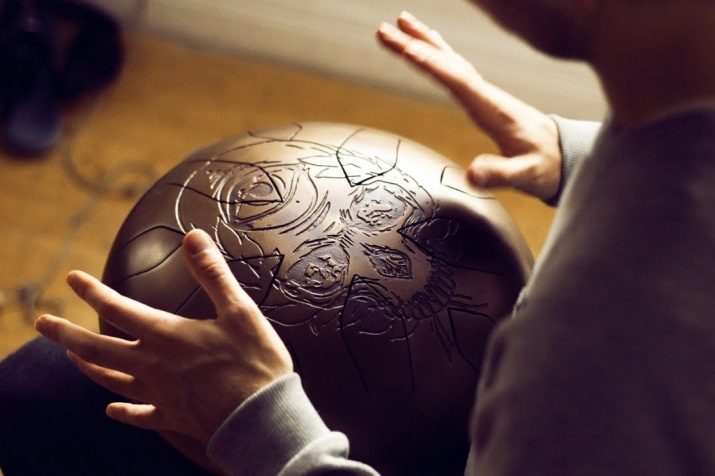
- Technique 2. Toddlers can play with their whole palm as their hands are still small. As a result, the sound will be a little dull, but this has its own charm, its own mystery. At the same time, the music resembles the sounds of singing bowls.
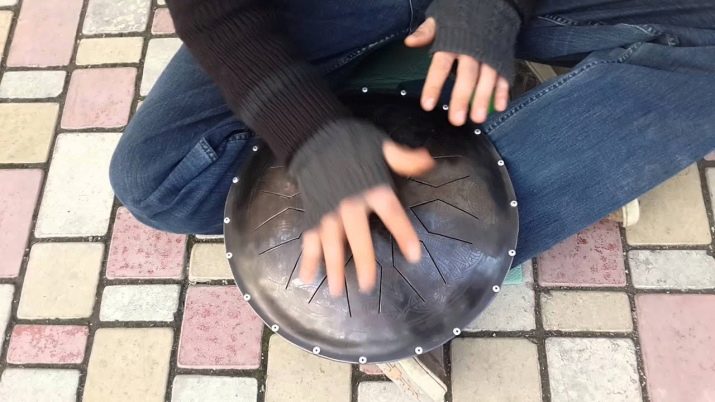
- Technique 3. Playing with sticks allows you to achieve the clearest sound. They are usually included with the instrument. With them, your music will be somewhat reminiscent of the ringing of bells.

Since when you play the glucophone, you simultaneously work with your hands and connect your imagination, this leads to the development of both hemispheres of the brain. This is especially useful for children and adolescents, as it contributes to good academic performance.
The glucophone is an excellent purchase for those who are not ready to learn to play other musical instruments. With it, you can play tunes intuitively, following the dictates of your soul. Purchase it in the store, or try to do it yourself, and it will bring a lot of pleasant emotions to your household and guests of your house.










Good article.